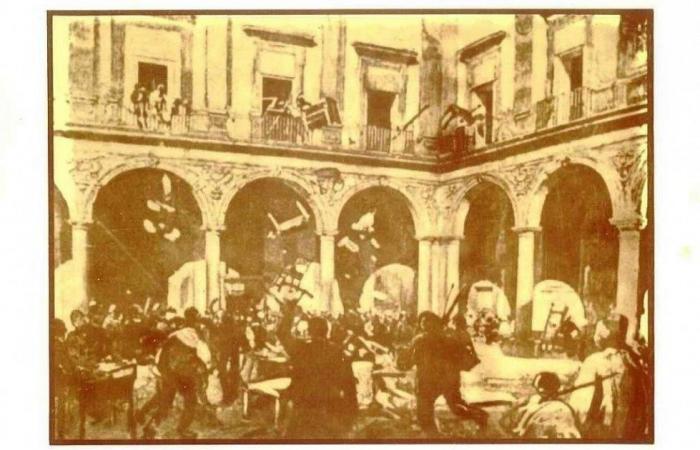Actuality
A journey into the past, when workers succumbed and didn’t know who to turn to, there was no shortage of unspoken protests but woe betide anyone turning against the “boss”. It’s not that the situation has changed much today, it’s enough to see and hear what has happened in the last few days in Campania, with the presence of the capolarato, exploiting underpaid workers, 16 hours of work paid 2 euros, so the news and interviews say. It is true that today there are laws that protect the worker along his journey but it seems, at times, to have returned to the historical period of the fascis which were a mass movement of socialist inspiration, originating, precisely, from a situation of hardship social crime also reported in Sicily and therefore also in Mazara del Vallo.
A peasant history of feudalism, which developed between 1891 and 1894 among agricultural labourers, miners and artisans. There were no unions or patronages, spontaneous masses of workers had formed to protest against exploitation. Was the city of Mazara watching? On 1 and 2 January 1894, no disasters occurred in the city. The only rebellion that was recorded was the assault on the Magistrates’ Court, then located in the premises of the former Jesuit Convent, where, in addition to the furniture, paintings and furnishings, an enormous paper heritage was destroyed as the well-stocked and rich Jesuit library.
A journalistic article of the time says that on January 1, 1894 in Mazara the offices of the state property, the registry, the taxes, the conciliator, the prefecture, the technical and elementary schools, the library hall with thousands of volumes, and all the warehouses and depots of the municipality. The flames devoured houses and churches adjacent to these offices and schools. The prison was attacked and the prisoners freed. On the 2nd in Mazara they burned the land registry, the municipal tax office, and went back to burning the registry office papers, and attempted a new assault on the prison, after which they burned the municipality and adjacent buildings.
There were no deaths or injuries. A devastation to say “we are here too”. On the 3rd Francesco Crispi declared a state of siege in Sicily. It was 1894. Following the example of the workers’ groups born in central-northern Italy, the movement was an attempt to redeem the less well-off classes and, initially, was made up of the urban proletariat, to which were added agricultural laborers, miners, naval workers and factory workers.
A protest that spread like wildfire throughout the Peninsula. In Sicily there were protests both against land ownership and against the State which openly supported the wealthy class. Sicilian society was very backward at the time: feudalism, although abolished at the beginning of the 19th century, had influenced the distribution of land and therefore of wealth. The unification of Italy, on the other hand, had not brought the hoped-for social benefits and discontent smoldered among the humblest classes.
The movement basically asked for reforms, especially fiscal ones and a more radical one in the agricultural sector, which would allow a revision of the agrarian pacts (abolition of taxes) and the redistribution of land. The Fasci were officially founded on May 1, 1891, in Catania by Giuseppe de Felice Giuffrida. This was followed by the Palermo Fascio (29 June 1892) led by Rosario Garibaldi Bosco and the establishment of the Italian Workers’ Party (August 1892).
By the end of 1892, the movement had spread throughout the rest of the island with offices in every capital except Caltanissetta. On 20 January 1893, in Caltavuturo (PA), 500 farmers, returning from the symbolic occupation of some state lands, were dispersed by soldiers and carabinieri armed with rifles, and thirteen demonstrators fell victims. Following this massacre, numerous demonstrations of solidarity were organized both by the Fasci and on a national level, and the exasperation of the social conflict increased.
On 21 and 22 May 1893 the Palermo congress was held, attended by 500 delegates from almost 90 Fasci and socialist circles. The Central Committee was elected, made up of nine members, one for each province participating in the movement. The peak of the movement was reached in the autumn of 1893, when strikes were organized across the island. Sicilian society was shocked, violent social clashes took place everywhere, and the movement dictated its own conditions to land ownership for the renewal of contracts. In this context, the Prime Minister Francesco Crispi, in an attempt to restore order and listening only the demands of the landowners, adopted a hard line with a military intervention including summary executions and mass arrests.
The movement was dissolved in 1894 and the leaders were arrested. On May 30, the Military Tribunal of Palermo condemned the leaders and only in 1895, with an act of amnesty, was clemency granted to all those convicted. Thus ended, in a violent way, the first real attempt at emancipation of the humblest classes, organized against the landowners. The historical period of the Fasci is distant but the exploitation of workers is still present. It’s like doing the crayfish race: one step forward and two steps back!
Salvatore Giacalone






